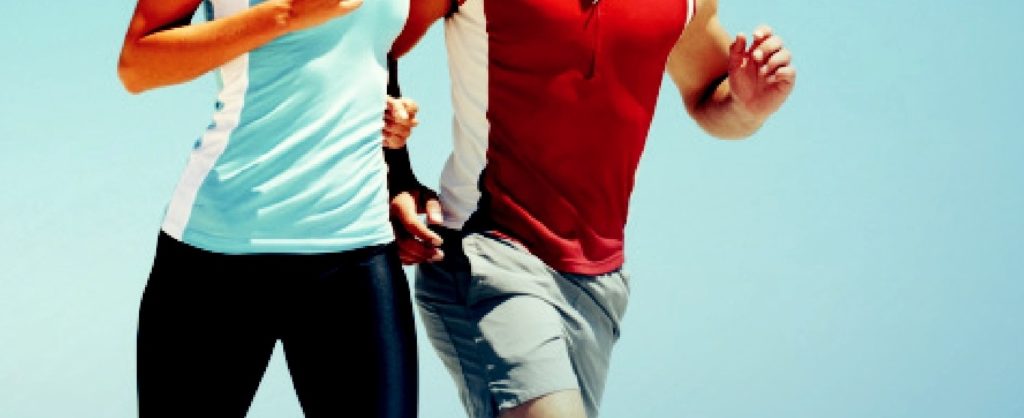If you want to be optimally healthy and happy with energy and vitality to spare, exercise is essential.
Most people are well aware of this, yet many still don’t make the time for it. Excuses abound; from “not having enough time,” to “if you can’t be consistent, there’s no point in even beginning.”
A number of fitness myths may be holding you back. Here are seven in no particular order.
Myth #1: Weight Training Will Make Women Look Too Bulky
Many women ignore strength training because they don’t want to “bulk up.” This is a mistake, as gaining more muscle has many benefits, from losing excess fat to maintaining healthy bone mass, and preventing age-related muscle loss as you get older.
Women, even heavy weight lifters, are not likely to gain excessive bulk simply because they have less muscle tissue and produce lower testosterone levels than men.
For a woman to turn into the Hulk, she’d have to be graced with exceptional genes, work out like a professional athlete, and take anabolic steroids, so ending up looking like a man really isn’t a concern for most women.
Rounding out your exercise program with a one-set strength training routine will help you optimize all the possible health benefits of a regular exercise program, and that includes “anti-aging” benefits as well.
In fact, strength training has a beneficial impact on at least 10 biomarkers of aging (i.e. factors indicative of biological age), including:
| Strength and muscle mass (which results in greater balance, as you get older) | Body composition | Blood lipids |
| Bone density | Cardiorespiratory fitness | Blood pressure |
| Blood glucose control | Aerobic capacity | Gene expression and telomere length |
Myth #2: It’s Dangerous to Start Exercising When You’re Older
“You are never too old to start exercising.”
In fact, research shows that, no matter how old you are when you start, you can gain significant improvements in strength, range of motion, balance, bone density, and mental clarity through exercise.
For example, consider the following scientific findings:
- • Even a small amount of exercise may protect the elderly from long-term memory loss and even help reverse some of the effects of aging
- • Women between the ages of 75 and 85, all of whom had reduced bone mass or full-blown osteoporosis, were able to lower their risk of falling with strength training and agility activities
- • Moderate exercise among those aged 55 to 75 may cut the risk of developing metabolic syndrome, which increases heart disease and diabetes risk
- • Among those who started exercising at age 50 and continued for 10 years, the rate of premature death declined dramatically, similar to giving up smoking and mirroring the level as seen among people who had been working out their entire lives
- • A combined aerobic and resistance exercise program improved physical function, muscle strength, and symptom severity among heart failure patients
My mother is a perfect example of how exercise can benefit the elderly. She began a workout program in 2010 while still recovering from a fall in 2009 in which she fractured both her shoulder and wrist. Exercise has been extremely helpful to her in regaining strength, balance, and flexibility.
Exercise will also help you avoid weight gain, which tends to creep up on you as the years go by. As noted in the featured article:
“It’s a matter of reduced physical activity levels and lower metabolic rate caused by a loss of lean body mass [muscle],’ says JoAnn Manson of Harvard Medical School.
‘The lifelong loss of lean body mass reduces our basal metabolic rate as we age,’ says Arkansas’s William Evans. ‘It’s a very subtle change that begins between ages 20 and 30. The percentage of body fat gradually increases, and it produces an ever-decreasing calorie requirement.’”
This goes back to myth #1. Muscle cells burn more calories than fat cells, so simply carrying more muscle on your frame helps you use up more calories even when you’re not exercising.
Myth #3: Walking Is Useless
Chronic sitting is the new smoking, raising your risk of an early death from poor health independent of your fitness and other lifestyle habits. In fact, the medical literature now contains over 10,000 studies showing that frequent, prolonged sitting — at work, commuting, and watching TV at night — significantly impacts your cardiovascular and metabolic function.
Walking more is an excellent remedy that virtually everyone would benefit from, even if you have a regular fitness program. My personal recommendation is to use a two-pronged approach: a) limit sitting to less than three hours a day, and b) walk 7,000 to 10,000 steps per day, over and above any regimented exercise you may be doing. I personally walk around 15,000 steps a day
A fitness tracker can be a helpful tool to ensure you’re hitting your mark. Once you’re in the habit of walking more, consider switching up the pace, interspersing bouts of speed walking followed by more casual strolling.
Numerous studies show that it is this intermittent high and low intensity that appears to produce the most significant results. So simply by exerting yourself intermittently when walking, you can dramatically increase the return of your effort without spending any extra time on it. Walking is also an excellent option if you’re so out of shape and/or overweight that the very idea of exercising seems too daunting to even attempt. Walking is among the easiest exercises to perform, no matter what your age or fitness level.
Myth #4: You Have to Exercise Long and Hard to Lose Weight and Improve Fitness
Lack of time is usually at the top of the list of excuses for why people don’t exercise. They think they need to carve out at least an hour several times a week to see results, but nothing could be further from the truth. Research tells us conventional cardio is actually one of the least effective modes of exercise. Instead, high-intensity interval training (HIIT) — which requires but a fraction of the time — has been shown to be FAR more efficient and effective, compared to longer, slower cardio workouts.
There are many versions of HIIT, but the core premise involves maximum exertion followed by a quick rest period for a set of intervals. My Peak Fitness routine uses a set of eight 30-second sprints, each followed by 90 seconds of recovery. The elliptical machine is a useful exercise tool when doing HIIT, although you can also use a recumbent bike or no equipment at all.
Exercises such as push-ups, burpees, jump squats, and walking/sprinting for example, can be done at high intensity intervals. You can also turn your strength training exercise into a high intensity one by slowing down your movements. For more information about using super slow weight training as a form of high intensity interval exercise, please see my interview with Dr. Doug McGuff.
Ideally, you’ll want to perform HIIT exercises two or three times a week. Each session totals up to just four minutes of intense exertion, and you can be completely done in about 20 minutes. Here, you actually want to avoid exercising too frequently. Doing HIIT more than three times a week can be counterproductive, as your body needs to recover between sessions. Instead of time, the focus is on intensity.
The following video demonstration is a few years old now, but you can get an idea of the intensity you’re looking for. (Since recording this demonstration I’ve also incorporated Buteyko breathing — breathing through your nose throughout the entire exercise — which has additional health and fitness benefits.)
Myth #5: You Can Target Fat Deposits with Spot Training
Many have fallen for the misconception that exercising an area will result in fat loss in that area. As the fat starts accumulating around the waist, they’ll start doing sit-ups, and when nothing changes, they give up altogether. If this sounds like you, please reconsider your approach, because spot training doesn’t work. As noted in the featured article:
“Abdominal and hip exercises can strengthen and tone the muscles. But those muscles are underneath the ‘subcutaneous’ layer of fat that gives the lovely appearance of flab. Only losing weight can get rid of excess fat, and where you lose the weight depends on your genes. Losing weight around the waist is easier than losing it at the hips.”
If your goal is to shed excess fat, intermittent fasting combined with high intensity interval training is an excellent way to start. Again, if you’re too out of shape to attempt HIIT right away, begin by walking, and then adding in bouts of faster walking. Eventually, you’ll get to the point where you can do one, two, or more intervals of HIIT on an elliptical or recumbent bike. Work your way up to six or eight sets of intervals.
Myth #6: If You Don’t Need to Lose Weight, There’s No Point in Exercising
This is a major fallacy. While weight loss tends to be a side effect of exercising, it’s certainly not the only, or even the primary, reason for exercising. Modern fitness research offers many potent reminders that physical activity is one of the best “preventive drugs” for many common ailments, from psychiatric disorders to heart disease, diabetes, and cancer.
For example, one meta-review of 305 randomized controlled trials comparing the effectiveness of exercise versus drug interventions on mortality outcomes found no statistically detectable differences between exercise and medications for prediabetes and heart disease.
One of the key health benefits of exercise is that it helps normalize your glucose, insulin, and leptin levels by optimizing insulin and leptin receptor sensitivity. This is one of the most important factors for optimizing your overall health and preventing chronic disease, and may explain why exercise is such a potent preventive medicine. Exercise also helps lower triglycerides and raise HDL cholesterol, both of which are important for lowering your risk of heart disease.
In short, exercise is preventive medicine, although you may not realize exactly which diseases you’re preventing in the long run. Beyond that, it also adds to your general quality of life. Sleep and mental health, for example, are two areas that can greatly benefit. Those who succeed at maintaining good health into old age typically have one thing in common: a healthy diet and regular exercise is part of their day-to-day lifestyle.
It’s not an on-and-off proposition to fit into a particular garment for a special occasion. I recently wrote about how to make exercise a life-long habit, and one of the ways to do this is to reframe your ideas on the rewards of exercise. Instead of aiming for a particular number on your scale, shift your focus to the immediate rewards — i.e. how you feel right after exercising.
Most will feel refreshed, more energetic, and clearheaded, allowing you to function at home, at school, or at work with greater ease and less stress. By noticing how exercise simply makes you feel “better,” that very same day, can help you embrace exercise as part of your lifestyle. No matter what weight you end up at, exercise is bound to pay dividends.
Myth #7: No Pain No Gain
While high intensity exercise is an important component of a well-rounded and effective program, it’s a mistake to think you have to work out at maximum intensity all the time. As noted earlier, this can backfire, as your body needs time to recuperate between sessions.
It’s also a mistake to think that exercise must hurt or somehow be excruciatingly difficult in order to work. As noted in the featured article: “[M]oderate-intensity exercise lowers the risk of dying just as much as high-intensity exercise. The trick is making sure that the exercise is at least moderate-intensity — that is, equivalent to walking at a pace of three to four miles an hour.”
This does not mean you ignore low intensity movement. You need both to be optimally healthy. One way is doing ideally around 7,000 to10,000 steps a day of walking.
As with other medications, it’s important to get the dosage right. Too little, and you won’t get much benefit. Too much, and you could potentially do harm. For example, extreme endurance cardio, such as marathon running, can actually damage your heart. Your heart is designed to work hard, and will be strengthened from doing so, but it’s only designed to do so intermittently, and for short periods.
Two recently published large-scale, long-term studies have shed much needed light on the subject of optimal exercise dosage. After analyzing exercise data from 661,000 adults and 14 years’ worth of death records, they were able to tease out how various “dosages” of exercise impacted mortality. Not surprisingly, people who didn’t exercise at all had the highest risk of premature death. However, they found that among those who did exercise regularly, there was a “Goldilocks zone” within which people gained the greatest rewards. Any more and any less resulted in declining rewards.
The ideal amount of exercise, providing the highest reduction in mortality risk, was 450 minutes per week (just over an hour a day) of moderate exercise, such as walking. Compared to non-exercisers, they lowered their risk of premature death by 39 percent.
Those who got up to but no more than 150 minutes of moderate exercise per week lowered their risk of early death by 20 percent. Those who consistently got 150 minutes per week lowered their risk of death by 31 percent. Interestingly, those who exercised at 10 times above the recommended level — about 25 hours a week — only gained the same mortality risk reduction as those who met the guidelines of 150 minutes per week!
The second study focused on intensity. Health survey data from more than 200,000 adults was pooled, and the exercise that each person engaged in was qualified according to intensity. Here, they found that people who spent more than 30 percent of their exercise time in strenuous activities gained an extra 13 percent reduction in early mortality, compared to those who always exercised at a consistent pace. As reported by The New York Times:
“[A]s in the other study, they found that meeting the exercise guidelines substantially reduced the risk of early death, even if someone’s exercise was moderate, such as walking. But if someone engaged in even occasional vigorous exercise, he or she gained a small but not unimportant additional reduction in mortality.”
Make Exercise Part of Life
Making time for exercise is an important part of self-care, without which you’ll be less capable of attending to the needs of others. Viewing it as just another part of life, on par with brushing your teeth and washing your hair, can really help improve the quality of your life. Should your weight happen to be an issue, it’s likely to improve providing you incorporate some high intensity exercises. And if you don’t need to lose weight, remember there’s so much more to gain than a few less pounds.
Exercise may mean the difference between being too infirm to move when you reach your senior years, or ripping up the dance floor on your 75th birthday. Depression, which affects about one in 10 Americans, can also be alleviated with the help of exercise. In fact, a number of studies have found the effectiveness of exercise to meet or exceed that of antidepressants.
Ideally, you want to incorporate a variety of activities, including core-strengthening exercises, strength training, stretching, and high-intensity activities into your rotation. Also remember that intermittent movement is equally (if not more) critical for maximizing the quality of your life. Chronic, undisrupted sitting — even if you maintain an optimum fitness program — has been found to be an independent risk factor for premature death.
Originally posted fitness.mercola.com 7th August 2015























